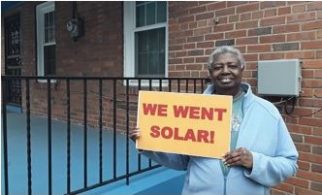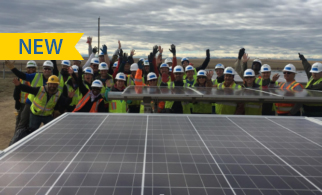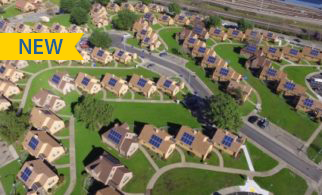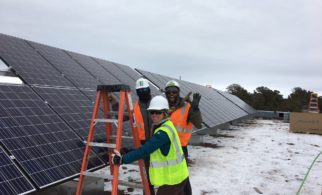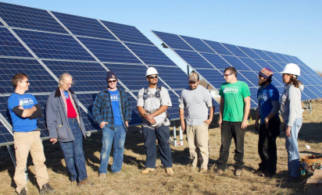Why Act
The growth of solar in the United States provides a tremendous opportunity to address some of the greatest challenges faced by lower-income communities: the high cost of housing, unemployment, and pollution. Solar can provide long-term financial relief to families struggling with high and unpredictable energy costs, living-wage jobs in an industry where the workforce has increased 168% over the past seven years, and a source of clean, local energy sited in communities that have been disproportionately impacted by traditional power generation.

Interest in large-scale policies to enable solar access for low-income families is increasing across the country, thanks to the success of early policy initiatives in California; national leadership around low-income solar access from the Federal government; and increased public interest in the unique combination of public policy issues that low-income solar can address. The market opportunity is huge: According to a recent NREL report, 43% of the U.S. population is at or below 80 percent of their area median income (The U.S. Department of Housing and Urban Development definition of low-income), representing 49.8 million low-income households in the U.S. An estimated half of these households are in buildings suitable for solar. Targeted solar policies could open up access for these families on a large scale. Reasons to develop a low-income solar program include:
- Equitable Access. Policy makers in California, Colorado, Illinois, and Washington D.C. have recognized that their solar programs are funded by all ratepayers/taxpayers, including low-income, and have worked to provide equitable access to incentives.
- Participation. Low-income solar programs offer an opportunity to be proactive in ensuring that all communities are participating early and are part of our national transition to clean energy.
- Economic Benefit. Because low-income families spend a disproportionate amount of their income on utility bills, they receive a proportionally greater economic benefit from solar power.
- Environmental Justice. Low-income communities bear the brunt of pollution and climate change.
- Jobs. A low-income solar program engages low-income communities in the emerging solar sector and can provide access to employment opportunities.
- Widespread Adoption. A low-income solar program can move local solar markets beyond the “early adopter” phase and show that solar is a viable energy solution for all communities.
